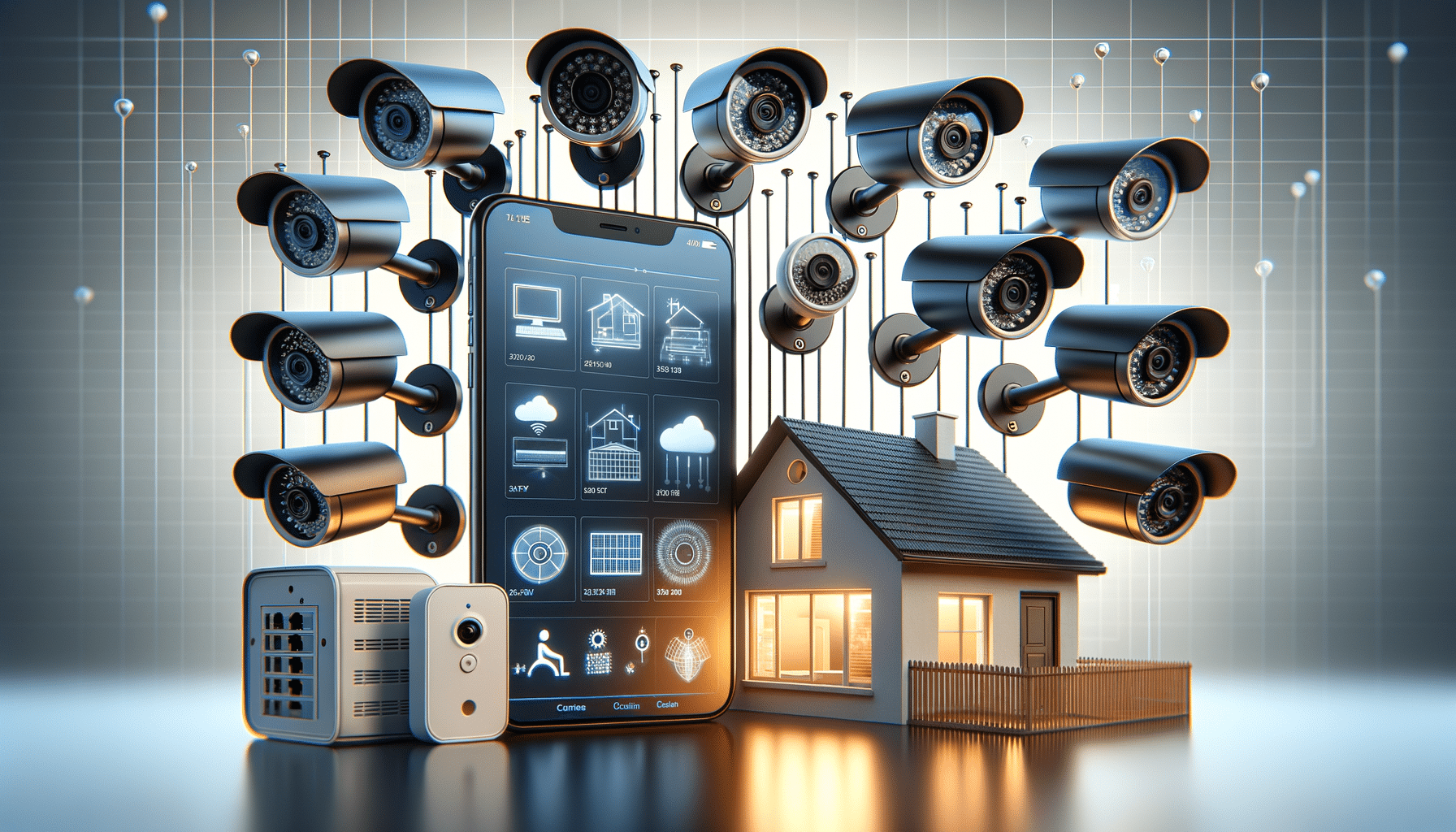
Home Security Cameras in the U.S.: How They Work and How to View Them Remotely
Understanding Home Security Cameras
Home security cameras have become an integral part of modern household safety strategies. These devices serve as vigilant sentinels, keeping watch over our homes and providing peace of mind. Understanding the technology behind these cameras can help homeowners make informed decisions about their security needs.
At their core, security cameras capture video footage of designated areas and transmit it to a storage device or a cloud service. This footage can be reviewed in real-time or at a later date, depending on the system’s capabilities. Cameras vary in design, with options ranging from wired to wireless, and from indoor to outdoor models. Each type offers distinct advantages, such as ease of installation or weather resistance.
The technology behind these cameras has evolved significantly. Modern cameras often include features like motion detection, night vision, and high-definition video quality. Motion detection allows the camera to start recording only when movement is detected, conserving storage space and making it easier to review footage. Night vision ensures that the camera can capture clear images even in low-light conditions, while high-definition video provides detailed images that can be crucial in identifying faces or license plates.
In addition to these features, many security cameras are now equipped with smart technology. This allows them to integrate with other smart home devices, enabling functionalities such as remote access and control through mobile apps. This integration can enhance the overall security system by allowing homeowners to monitor their property from anywhere in the world.
How to View a Security Camera From Anywhere
One of the most appealing features of modern security cameras is the ability to view footage remotely. This capability allows homeowners to keep an eye on their property from anywhere, providing a sense of security even when they are miles away.
To view a security camera remotely, the first requirement is a camera system that supports remote access. Many contemporary models come with this feature built-in, often facilitated through a dedicated app provided by the manufacturer. These apps are typically available for both iOS and Android devices, ensuring broad compatibility.
Setting up remote access generally involves connecting the camera to the home’s Wi-Fi network. Once connected, the camera can transmit live footage to the app on a smartphone or tablet. Some systems also allow access via a web browser, providing flexibility in how the footage is viewed.
Security is a crucial consideration when accessing cameras remotely. It is essential to ensure that the connection is secure to prevent unauthorized access. This often involves setting up strong passwords and enabling two-factor authentication if available. Additionally, keeping the camera’s firmware updated is vital, as manufacturers regularly release updates to patch security vulnerabilities.
Remote viewing not only provides peace of mind but also allows for quick responses to potential security threats. For instance, if the camera detects motion while the homeowner is away, they can receive an alert on their phone and check the live feed to assess the situation. This ability to monitor and react in real-time is a significant advantage of modern security systems.
Key Considerations Before Installing a Security Camera at Home
Before installing a security camera system, there are several key considerations to keep in mind to ensure that the system meets your security needs and complies with legal and privacy regulations.
Firstly, it’s important to determine the areas you want to monitor. Common locations include entry points like doors and windows, driveways, and outdoor spaces. Understanding your coverage needs will help in selecting the right type and number of cameras.
Next, consider the type of camera that best suits your needs. Wired cameras are generally more reliable as they are not susceptible to interference, but they require professional installation. Wireless cameras offer greater flexibility in terms of placement and are easier to install, making them a popular choice for DIY enthusiasts.
Another crucial factor is the camera’s resolution. Higher resolution cameras provide clearer images, which can be essential for identifying intruders or capturing detailed evidence. However, they also require more storage space, so it’s important to consider your storage options, whether it be local storage on a DVR or cloud storage solutions.
Privacy is an important consideration as well. Ensure that the cameras are positioned in a way that respects the privacy of neighbors and does not infringe on their property. It’s also wise to familiarize yourself with local laws and regulations regarding surveillance to avoid legal issues.
Finally, consider the cost of the system, including installation, maintenance, and any subscription fees for cloud storage or additional features. Balancing these costs with the benefits and features you desire will help you choose a system that provides value and peace of mind.
Conclusion: Enhancing Home Security with Informed Choices
Home security cameras are a powerful tool in safeguarding your property and providing peace of mind. Understanding the technology behind these cameras, how to access them remotely, and the key considerations before installation can help homeowners make informed decisions that enhance their home security.
By selecting the right system and features, and ensuring secure remote access, homeowners can effectively monitor their property from anywhere. This capability not only offers reassurance but also empowers homeowners to respond swiftly to any potential threats.
As technology continues to advance, security cameras will likely become even more integrated into the fabric of smart homes, offering new functionalities and improved performance. Staying informed and adapting to these changes will ensure that your home remains protected in the ever-evolving landscape of security technology.
